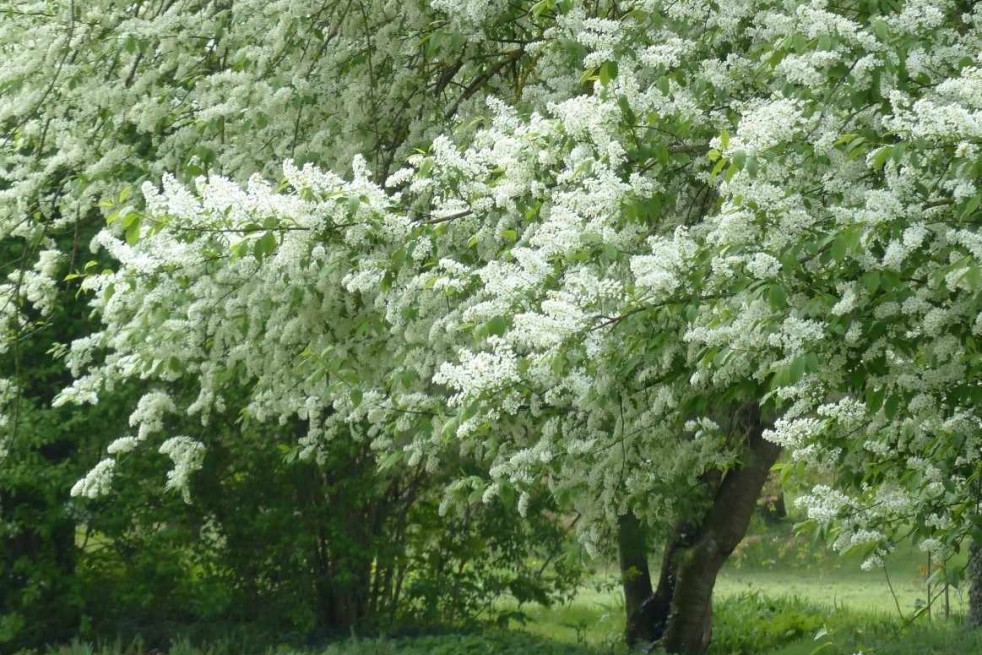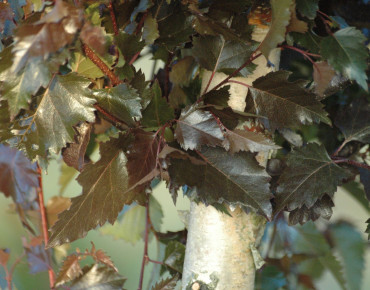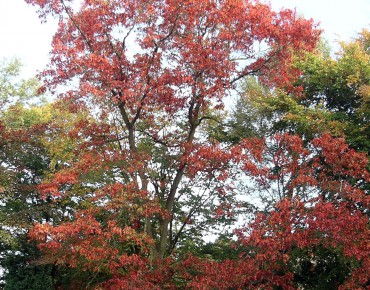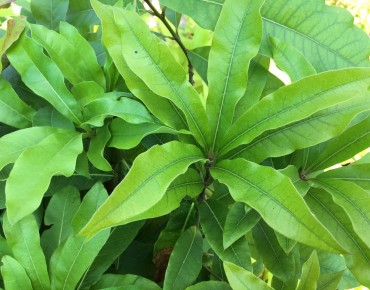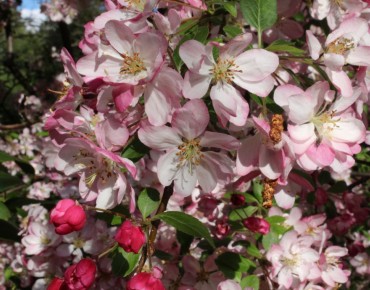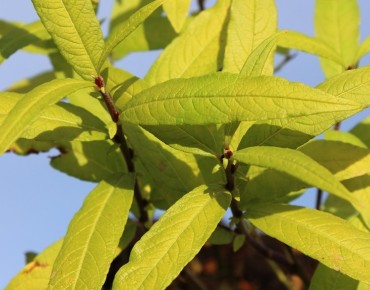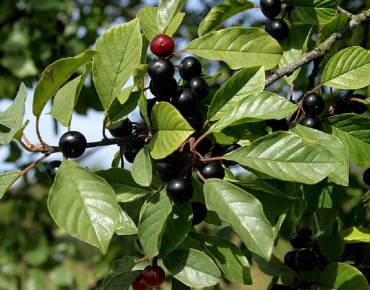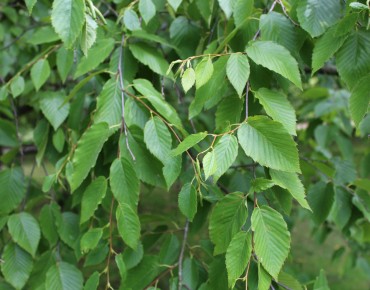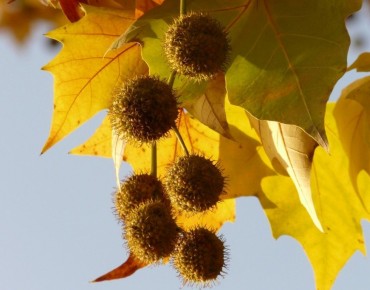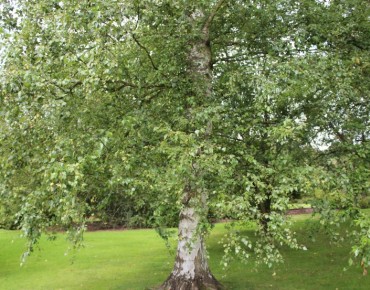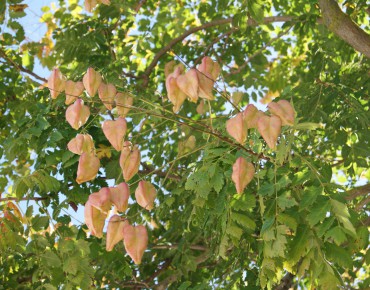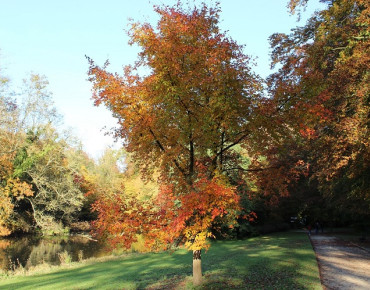- Out-of-Stock
Bird Cherry
Prunus Padus
Description
Prunus padus – Bird Cherry
Origins and characteristics
Native to Europe and temperate Asia, <em>Prunus padus</em> naturally grows along woodland edges and in moist, cool areas. It belongs to the Rosaceae family, like cherries, apples and almonds. This native species is ecologically valuable, nectar-rich and attractive to wildlife.
Description and special features
The Bird Cherry is a medium-sized tree with a graceful, slightly weeping habit and flexible branches. Its deciduous foliage turns from mid- to dark green to golden yellow in autumn. In April-May, it produces long, drooping clusters of white flowers, reminiscent of lily-of-the-valley, with a pleasant almond scent. Small black drupes follow, inedible to humans but highly appreciated by birds.
-
Mature height: 6 to 10 m
-
Width: 4 to 6 m
-
Habit: Upright then spreading, naturally elegant
-
Foliage: Deciduous, oval, bright green, golden yellow in autumn
-
Flowering: April to May
-
Fruits: Small black cherries (inedible for humans)
-
Hardiness: Excellent (down to -30 °C)
-
Growth: Fast
Flowering and fruiting
-
Flowers: White, in 10–15 cm hanging racemes, almond-scented
-
Fragrance: Sweet, floral, reminiscent of bitter almond
-
Fruits: Small, round, black (July-August), favoured by birds
-
Nectar-rich: attracts bees, butterflies and hoverflies
Exposure and soil
-
Exposure: Full sun to partial shade
-
Soil: Rich, moist, humus-rich, slightly acidic to neutral
-
Tolerates calcareous soil but prefers deep, well-drained land
-
Thrives in wet areas and forest edges
Planting
-
Best planted in autumn or spring
-
Add compost or soil conditioner to enrich the planting hole
-
Allow enough space (minimum 4–5 m)
-
Mulch in summer to retain soil moisture
Watering
-
Regular in the first year
-
Appreciates watering during long dry spells
-
Performs very well in damp soils
Pruning
-
Light pruning after flowering to shape, if needed
-
Tolerates gentle pruning, but not required
-
Can be trained as a bonsai thanks to its flexible growth and decorative blooms
Propagation
-
By seed (slow germination)
-
By root suckers (the species naturally produces them)
-
Also possible by cuttings or layering
Garden use
-
As a specimen to highlight its flowers and foliage
-
In informal or country hedges
-
Near water features or woodland edges
-
In natural or wildlife gardens: ideal for biodiversity
-
As a bonsai for lovers of delicate flowering trees
Pest and disease resistance
-
Very hardy, rarely affected by disease
-
May occasionally suffer from:
-
Aphids on young shoots
-
Monilia (rare, in very wet conditions)
-
-
No routine treatment needed in well-drained soils
Growing tips
-
Prefers moist soil and bright conditions
-
Water regularly for the first two years
-
Remove lower branches to encourage tree form
-
Mulch with organic matter to maintain soil moisture
Prunus padus, or Bird Cherry, is a charming, hardy little tree that combines visual appeal, fragrance, spring flowers and ecological value. Fast-growing and easy to care for, it fits beautifully into natural or country gardens, and even in containers for miniature cultivation. A must for lovers of poetic blooms and native species supporting wildlife.
Features
- Common name : bird cherry, hackberry, hagberry, or Mayday tree
- Family : Rosaceae
- Category : tree
- Spread : 4 - 6 m
- Foliage : deciduous
- Color of flowers : white
- Use : Isolated - hedge
- Soil : rich and well-drained
- Habit : Spreading
- Earth to use : universal potting soil/garden soil/compost
- Enemies : caterpillar - aphid
- Possible diseases : Armillary - blisters - wilting - lead
Expédition & livraison
How does the delivery work?
 As soon as you place your order your plants are selected
As soon as you place your order your plants are selected Each order is processed individually.
Each order is processed individually. Plants are packed, staked and labeled.
Plants are packed, staked and labeled. Packaging is carefully implemented to avoid any problems.
Packaging is carefully implemented to avoid any problems. Packages are ready to be shipped.
Packages are ready to be shipped.
Our delivery methods
Shipping of our plants throughout Europe (except overseas and islands).
Customer reviews

